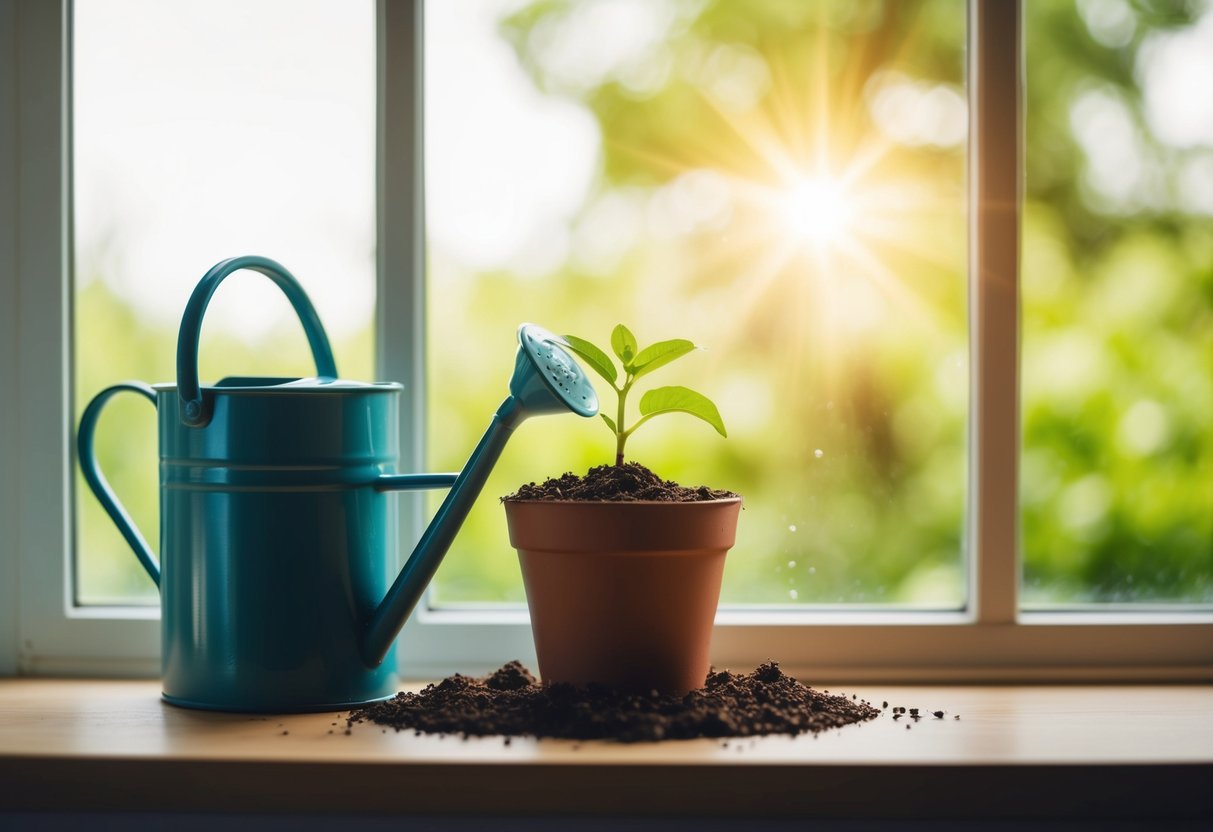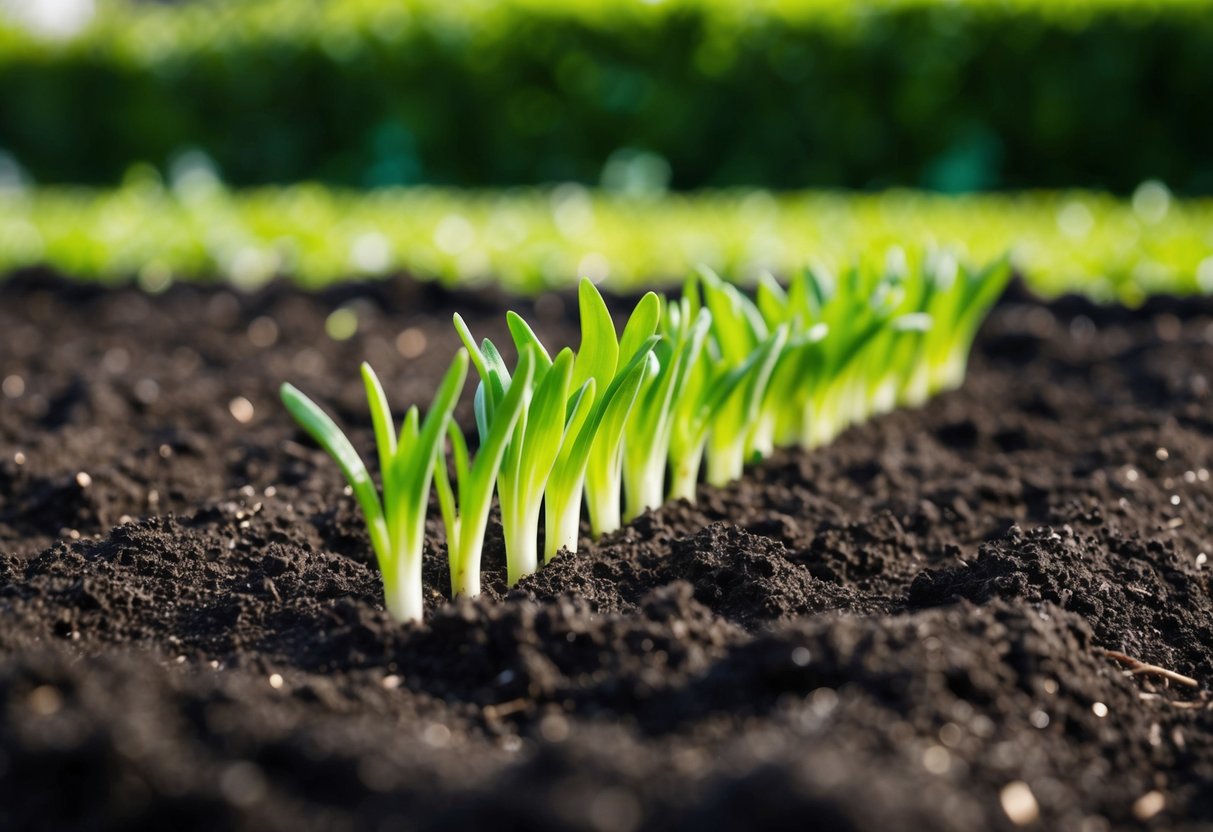What is the Easiest Thing to Plant and Grow? A Beginner’s Guide
When starting a kitchen garden, you might wonder what the easiest thing to plant and grow is. Whether you’re a beginner gardener or just looking for something simple to harvest, planting vegetables like zucchini could be a great start. Zucchini is known for its ease of growth, making it perfect for those new to gardening and looking for a rewarding experience. Its resilience against common diseases adds to its appeal, ensuring that even if you don’t have a green thumb, you can still succeed.

Snap beans are another excellent choice for a vegetable garden, especially if you’re living in cooler areas. These fast-growing plants thrive in warm, moist soil, providing you with delicious produce in no time. With two types to choose from—bush and pole—green beans offer versatility and generous yields which are perfect for small spaces.
If you’re excited about creating a thriving garden, consider adding these vegetables to your planting list. Both zucchini and snap beans offer easy growing experiences and satisfying results, turning your gardening journey into an enjoyable adventure. Embrace the simplicity and joy of growing your own food and watch your garden thrive!
Choosing the Right Location

When starting a garden, location is key. The amount of sunlight your plants get and the hardiness zone you live in will help determine what will grow best in your area. By paying attention to these factors, you can improve your chances of a successful garden.
Understanding Sunlight Needs
Most vegetables and flowers thrive in a sunny spot. This means at least six hours of direct sunlight each day is ideal. Vegetables like tomatoes, cucumbers, and peppers do best with lots of sun.
If your garden gets less light, consider shade-tolerant plants like lettuce or spinach. Observing how the sun moves across your yard can help you choose the best location. Sunlight exposure is crucial for healthy plant growth.
It’s helpful to watch your garden at different times of the day. Notice where shadows fall and how they might change with the seasons. This can give you a better idea of where to place your plants for maximum sun exposure.
Considering the Hardiness Zone
Your hardiness zone affects what plants you can grow and when to plant them. A hardiness zone is a guide that shows the average lowest winter temperatures for a region. Different plants can handle different temperature extremes, so it’s important to know your zone.
For example, if you live in a colder zone, you might start with plants like kale or peas that can tolerate frost. In warmer zones, try growing heat-loving crops like melons or sweet potatoes.
Check the USDA hardiness zone map to find out what zone you are in. This can help you pick plants that will thrive in your climate.
Starting with Low-Maintenance Vegetables

Growing your own vegetables can be a fun and rewarding experience. By choosing low-maintenance options, you can enjoy fresh produce without much hassle. This section highlights some of the simplest vegetables and herbs to get you started.
Top Vegetables for Beginner Gardeners
When starting a garden, picking the right vegetables can make all the difference. Lettuce is a great choice because it grows quickly and requires minimal care. You’ll enjoy fresh salads from your own garden in just a few weeks. Another easy vegetable to grow is spinach, which thrives in both garden beds and containers.
Radishes are among the easiest vegetables to grow. They mature fast, giving you results in around a month. Fast-growing and prolific, green beans are a popular starting point. They can be grown in pots or directly in the soil. If you have room, consider planting cherry tomatoes. They require a bit more sunshine but offer a rewarding harvest.
Herbs and Small Plants for Easy Success
Small herbs are perfect for beginners due to their simplicity in care. Basil is a favorite that grows well in pots or in the ground. Its fragrant leaves add flavor to a variety of dishes. Chard and Swiss chard also make it to the list with their versatile uses and ease of growth.
These leafy greens are not picky about soil and can be harvested multiple times. They adapt well to different climates and conditions. Pairing these herbs with the vegetables mentioned above will help you create a garden that’s not only easy to maintain but also bursting with colors and flavors.
Soil Preparation and Planting Techniques

To grow plants easily, you need to focus on making the soil healthy and using the right methods for planting your seeds and seedlings. This helps ensure strong growth and a bountiful harvest.
Boosting Soil Health for Beginners
Healthy soil is key to successful gardening. Start by removing any rocks and debris from your garden bed. It’s a good idea to loosen the soil to help roots grow deep. Aim for at least 8 inches deep. If you have heavy clay soil, mix in coarse sand and peat moss to improve texture. For sandy soil, add compost to help retain water.
Consider using companion planting to improve soil health. This involves growing plants together that benefit each other, like planting marigolds with tomatoes to repel pests. Practicing crop rotation—changing the types of plants grown in each area from year to year—can prevent disease and improve soil fertility.
Seed Sowing and Transplanting Tips
When sowing seeds, choose the right time based on your region’s climate. For most seeds, you’ll want to plant them in well-prepared soil with some added organic matter. Cover seeds lightly with soil and water gently. Keep the soil moist until seedlings appear.
For transplanting, ensure seedlings are healthy before moving them. Dig a hole big enough for the roots, and place the seedling carefully in the hole. Gently pack soil around it. Make sure to water the seedling well after transplanting to help it settle in its new spot.
Remember, patience is key. Each plant has specific needs, so consider creating a simple chart or list to track what each type of plant requires. This will help you stay organized and successful in your gardening journey.
Caring for Your Garden

To keep your garden thriving, focus on proper watering, feeding, and pest management. Consistent care helps your vegetables grow healthy and productive. It’s important to check the needs of each plant because they can vary.
Watering and Feeding Your Plants
Water your garden early in the morning. This gives plants time to absorb moisture before the sun gets too hot. Aim for about 1 inch of water each week but adjust based on your climate.
A soaker hose can be useful for delivering water directly to the roots. Different plants may have specific needs. For example, marigolds enjoy more warmth and sunlight.
Feeding your plants strengthens them. Use natural fertilizers, like compost or fish emulsion. Apply according to the fertilizer instructions. Make sure to read the requirements for days to maturity to understand what your plants need at each stage.
Managing Pests and Diseases
Companion planting is a friendly way to manage pests naturally. For example, marigolds can repel certain insects, making them a good companion for many vegetables.
Check your plants regularly for signs of pests or diseases. Look for spots, holes, or discoloration. If you notice pests, a simple solution is to spray them with a mix of water and soap.
Encourage beneficial insects, like ladybugs, as they eat pests. Regularly checking your garden helps catch problems early. With the right care, your garden will flourish and reward you with a bountiful harvest.
Harvesting and Enjoying the Bounty

Getting the most out of your garden means knowing when to pick your produce and how to keep your garden thriving. From understanding the perfect time for tomatoes to extending the life of your zucchini plants, there are several ways to make the most of your efforts.
When and How to Harvest
Timing is key when harvesting your vegetables. For tomatoes, wait until they are firm and have a bright, even color. Picking them at this stage ensures the best flavor. Cucumbers should be harvested when they’re about 6-8 inches long and still firm. If left too long on the vine, they can become bitter.
Zucchini are best when they are 6-8 inches long. Larger fruits can be tough and less flavorful. Beets and carrots are ready when their shoulders poke through the soil. Use a gentle hand to pull these root vegetables, so you don’t damage them.
Different vegetables require different tools. For example, use a sharp knife or garden shears to cut cucumbers and zucchini, while a gentle twist is enough for tomatoes. Clean, sharp tools minimize damage and the chance of disease spreading.
Extending Your Growing Season
To keep the production going, you can try methods like succession planting and using season extenders. When one batch of carrots is harvested, plant more in its place. This keeps your supply steady throughout the growing season.
Consider using row covers or cold frames to extend the life of your garden. These methods are helpful for protecting late-season crops like beets and carrots from early frosts.
Mulching the base of plants like tomatoes and zucchini helps to retain warmth in the soil. This can especially benefit your harvest in cooler climates, giving you a few extra weeks of fresh produce. Exploring these options can help you enjoy a bountiful harvest for longer periods.







